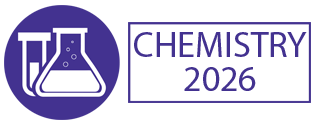Nuclear Magnetic Resonance (NMR) Spectroscopy
Nuclear Magnetic Resonance (NMR) spectroscopy is a powerful analytical technique used to study the molecular structure, dynamics, and interactions of organic and inorganic compounds in solution or solid-state. It operates based on the interaction of atomic nuclei with a strong magnetic field and radiofrequency radiation. NMR provides information about the chemical environment, connectivity, and conformation of molecules by measuring the resonance frequencies of atomic nuclei, typically hydrogen (^1H) or carbon (^13C). NMR spectra display characteristic peaks corresponding to different nuclei in the sample, allowing for the identification and quantification of compounds. Advanced NMR techniques such as multi-dimensional NMR, solid-state NMR, and relaxation measurements provide insights into molecular structure, dynamics, and interactions. NMR is widely used in chemistry, biochemistry, pharmaceuticals, materials science, and medical diagnostics for structural elucidation, reaction monitoring, and quality control. Continuous advancements in NMR instrumentation, pulse sequences, and data analysis software improve sensitivity, resolution, and experimental capabilities. Collaboration between researchers, instrument manufacturers, and software developers drives innovation in NMR spectroscopy, expanding its applications and impact in various scientific disciplines.

Hossam A Gabbar
Ontario Tech University, Canada
Victor John Law
University College Dublin, Ireland
Alexander Bagaturyants
National Research Nuclear University MEPhI, Russian Federation
Sergey Suchkov
N.D. Zelinskii Institute for Organic Chemistry of the Russian Academy of Sciences, Russian Federation
Shree Niwas Chaturvedi
Centre for Aptitude Analysis and Talent Search, India
Pieter Samyn
SIRRIS, Belgium




Title : Advances in plasma-based radioactive waste treatment
Hossam A Gabbar, Ontario Tech University, Canada
Title : Unraveling the ultrastructure and functions of the neuronal membrane skeleton using super-resolution fluorescence microscopy
Zhou Ruobo, Djillali Liabes University of Sidi Bel Abbes, Algeria
Title : Solar box cooker dehydration, and relative humidity endpoint detection, of lamiaceae culinary leaves on the island of Crete
Victor John Law, University College Dublin, Ireland
Title : Nutrient and heavy metal loads from the Ribeiras to Coastal zones: A land-ocean continuum perspective in Madeira Island
Aracelis Del Carmen Narayan Rajnauth, University of Porto, Portugal
Title : Prospective polyoxometalate-based covalent organic framework heterogeneous catalysts
Arash Ebrahimi, Comenius University Bratislava, Slovenia
Title : Eliminating implant failure in humans with nano chemistry: 30,000 cases and counting
Thomas J Webster, Brown University, United States